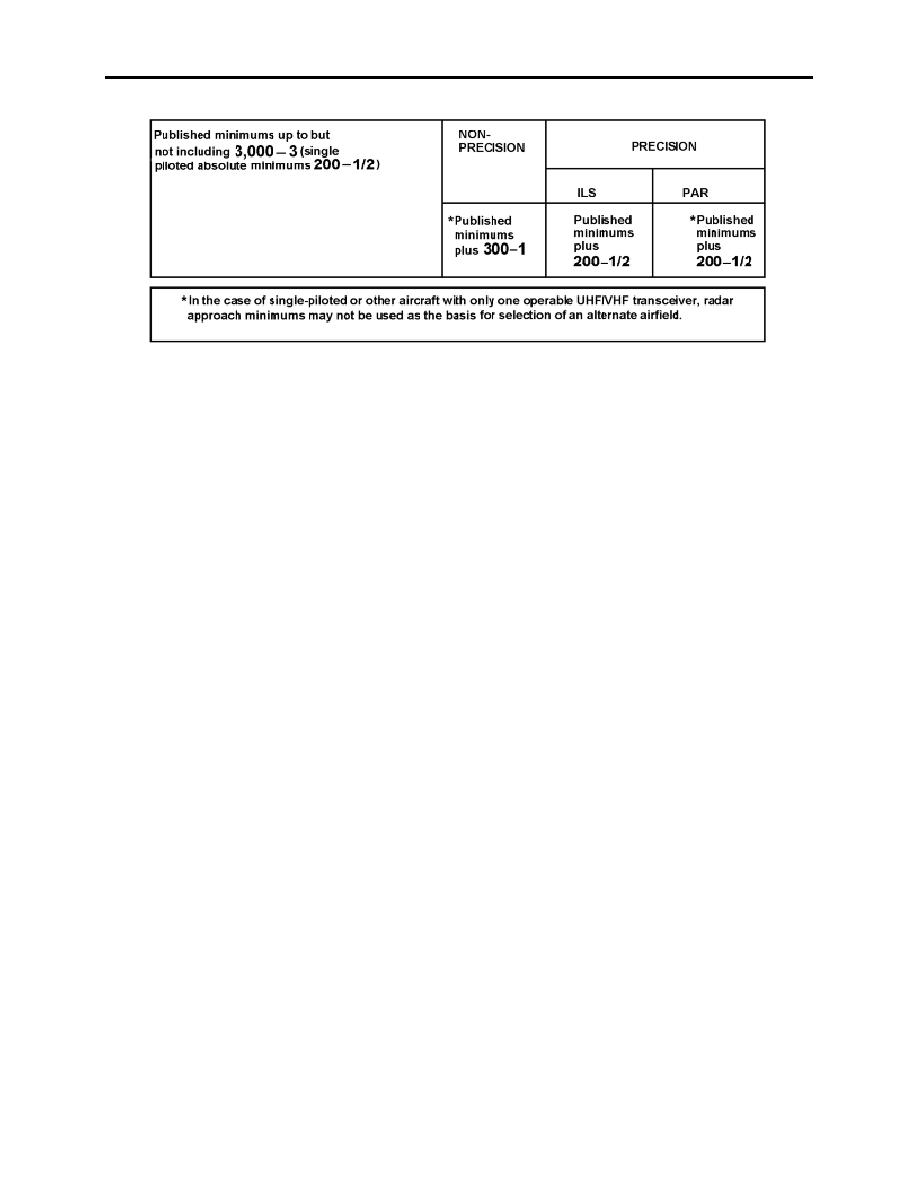 |
|||
|
|
|||
|
Page Title:
Figure 4-7. Alternate Weather Requirement |
|
||
| ||||||||||
|
|  INSTRUMENT FLIGHT RULES WORKBOOK
CHAPTER FOUR
Figure 4-7 Alternate Weather Requirement
One other factor must be considered when determining your destination's lowest approach
minimums. That factor is the runway you expect to be in use upon arrival. For example,
consider an airfield that has two runways, 927 and 1836. The radar approach data and the
approach plates show that the airfield has PAR approaches to runways 9 and 27 and nonprecision
approaches to all the runways. After further preflight planning, you find that runway 927 is
NOTAMed closed and the wind is forecasted to remain from the south at 1015 knots all day.
Your destination's lowest approach minimums will be based on a nonprecision approach to
runway 18.
When the destination weather is forecasted to be above your lowest approach minimums but
below 3000 foot ceiling and 3 miles visibility, you must also select an alternate airfield. As you
can see in Figure 4-7, the alternate weather requirement may be based on one of three
possibilities: (1) Nonprecision approach, (2) ILS, and (3) PAR. (The T34C is currently not
equipped for executing an ILS. A single-piloted aircraft or an aircraft with only one transceiver
may not use PAR/ASRs for alternate flight planning.)
OPNAV 3710.7 defines a single-piloted aircraft as "any aircraft that has only one set of flight
controls or any aircraft that has two sets of flight controls and instruments and being operated by
only one pilot who meets the requirements of the NATOPS manual for that model aircraft"
OPNAV further defines a student naval aviator (student pilot) as "an individual undergoing
training who is not designated as a naval aviator." Thus, the T34C is a single-piloted aircraft
when flown by a flight instructor and a student and a multi-piloted aircraft when flown by two
flight instructors.
All T34C pilots must take (when determining alternate weather minimums) the approach
minimums for the selected nonprecision approach (VOR or TACAN) at the alternate and add
300 feet and 1 mile to the weather minimums. For example, NAS Pensacola has a VOR
approach to runway 19 with approach minimums of 5001. To use Pensacola as an alternate, it
must be forecasting at least 800 foot ceiling and 2 miles visibility (ETA 1 HR).
The remarks sections of approach plates often contain conditions which affect ALTERNATE
selection and weather requirements.
INSTRUMENT FLIGHT RULES 4-9
|
|
Privacy Statement - Press Release - Copyright Information. - Contact Us |